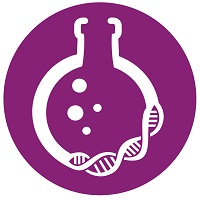Bioanalytics
Elevating Analytical Excellence: RNA Extraction and Singlicate Use in LBA

-

Ruwini Rajapaksha, PhD, PMP (she/her/hers)
Post Doctoral Fellow
Lovelace Biomedical
Albuquerque, New Mexico
Partner Presentation Speaker(s)
High-throughput RNA extraction kits are widely used in clinical and preclinical research to isolate nucleic acids from biological samples. These kits offer scalability and reduced labor, making them attractive for busy molecular biology labs. However, achieving consistently high RNA yield and purity—while maintaining reproducibility and reliability—remains a challenge. One major reason is the lack of standardized guidelines for nucleic acid extraction and purification. Differences in kit design and extraction chemistry often lead to inconsistent results across experiments, which can compromise downstream applications.
In the first part of my presentation, I will share our recent findings from a comparative study of four commercially available high-throughput RNA extraction kits. Using the KingFisher™ Flex automated platform, we tested these kits across six types of naïve non-human primate (NHP) tissues: brain, heart, kidney, liver, lung, and spleen. We focused on three key metrics: RNA purity, yield, and extraction efficiency (EE), using Xeno Internal Positive Control (IPC) spiking as a benchmark. Our results showed that while all kits delivered high RNA purity, there were significant differences in yield and efficiency depending on the tissue type. Notably, the MagMAX™ mirVana™ Total RNA Isolation Kit stood out for its accuracy and reproducibility, making it a preferred choice for applications requiring high-quality RNA. Other kits, such as the Maxwell® HT simplyRNA Kit, offered a good balance between cost and performance, though with some trade-offs in precision.
In the second half of the presentation, I will discuss our work on improving biomarker testing workflows, specifically through singlicate analysis in ligand binding assays (LBAs). Traditionally, tests like Enzyme Linked Immunosorbent Assay (ELISA) are performed in duplicate to ensure accuracy. However, this approach can introduce errors, especially when done manually, and requires more time, effort, and materials. Our study explored whether testing each sample just once—known as singlicate testing—could still deliver reliable results. We evaluated this method across 50 ELISA plates measuring interferon-gamma (IFN-γ) in blood samples from mice and monkeys, using analysts with varying levels of experience.
The results were compelling: singlicate testing matched duplicate testing in accuracy, with differences of less than 5%. It also passed quality control checks more frequently and showed less variability between analysts. These findings suggest that singlicate testing is not only reliable but also more efficient, offering significant savings in time and resources without compromising data quality.
Together, these studies highlight the importance of optimizing and standardizing RNA extraction and biomarker testing workflows. By improving consistency and reducing manual effort, researchers can achieve more dependable results—faster and more cost-effectively. These innovations have broad applications in molecular biology, gene therapy, and cell research, helping labs streamline operations while maintaining high scientific standards.
Learning Objectives:
- Evaluate the performance of high-throughput RNA extraction kits in terms of purity, yield and extraction efficiency for downstream applications.
- Understand the impact of singlicate analysis on accuracy and precision in ligand binding assays through comparative ELISA data.
- Demonstrate how standardization in RNA extraction protocols contributes to reproducibility and data quality.
- Compare the strengths and limitations of different RNA extraction kits for high-throughput bioanalytical workflow


